While it’s hard to scratch the surface when exploring Takashi Miike’s impressive resume, these 14 very different Miike films are a great place to start.
Intro by Jamie Marino
Japanese master of filmmaking madness and cult legend Takashi Miike tuns 60 today (August 24th). So we enlisted the help of a few writers, along with some outstanding guest contributors, to share some of our favorite films from Miike’s extensive catalog. Along with at least a couple of films you’re likely familiar with, we hope to introduce you to some of his lesser-known films — highlighting the diversity of style and story from a prolific auteur who has helmed over 100 movies since 1991.
Though shockingly cruel and brutal, none of his films are dark and depressing affairs. The violent chaos is a rocketship over the top, but there is an air of lighthearted nihilism and slap-sticky black comedy. You could almost call him a feel-good filmmaker. While Audition (1999) and Ichi the Killer (2001) are the films that put him on the gorehound map, he is also a master of the modern, character-driven Yakuza crime epic. His samurai films feature impressive historical detail and tight, lightning-fast, adrenaline-fueled sword battles.
With that said, here are 14 of our favorite Takashi Miike films, in order of release date — representing everything from his most notoriously brutal and controversial films to those that reflect his lighter side and his thoughtful exploration of humanity. We even tell you how to experience these films for yourself.
…
SHINJUKU TRIAD SOCIETY (1995)
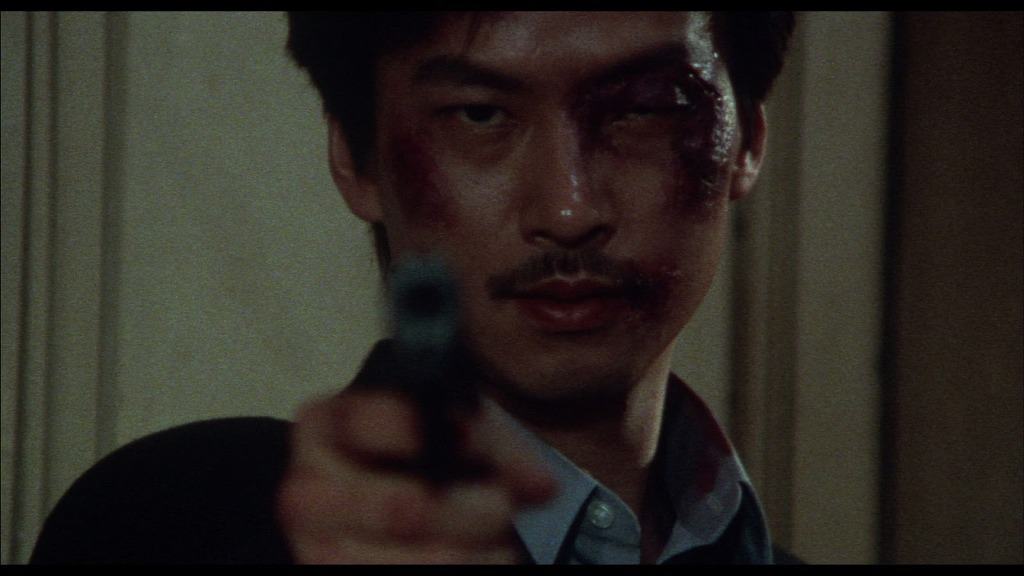
Recommended by Guest Contributor, Jeff Hutcheson (@captainstankplanet on Instagram)
The Black Society Trilogy is a celebrated series of three films (all directed by Takashi Miike) that are not connected by events or characters, but more of a thematic relation. One of those themes in question is me questioning myself as a human for loving them as much as I do. While the standard answer for “best” of the series is typically Rainy Dog, my weird and unappealing self vastly prefers the first entry in the trilogy: 1995’s Shinjuku Triad Society.
The film is sometimes credited with being the first Miike joint to really elevate him above his V-Cinema origins (not that there is anything wrong with V-Cinema, and I will fight you if you disagree).
Shinjuku Triad Society is ultimately a story of gangsters who employ a lawyer who happens to be the brother of a very corrupt policeman, obsessed with dismantling their operation. Like most Miike flicks, the plot synopsis doesn’t do the film justice in any way, and simply reading it gives the impression it is actually just every movie you have ever seen. However, within the first 5 minutes, you are pulled in and given just a taste of the dark and unpleasant journey you are in for.
While not a horror film by any traditional definition, Shinjuku offers up many scenarios that would be beyond frightening to find yourself involved in.
Granted I am not thinking of joining the Triads anytime soon (or fighting a one-man war on them), but the film doesn’t paint the most attractive picture of that life nor the lives of those attempting to stop them. Our main character is a burnt-out, angry, and borderline sociopathic cop whose methods are… uh… gross.
The movie is smart enough to know that a story such as this doesn’t always benefit from having a protagonist who is 100% detestable.
So what we have instead is one of the most flawed characters in the history of ever, yet someone who is still (in his own way) doing what he believes is right.
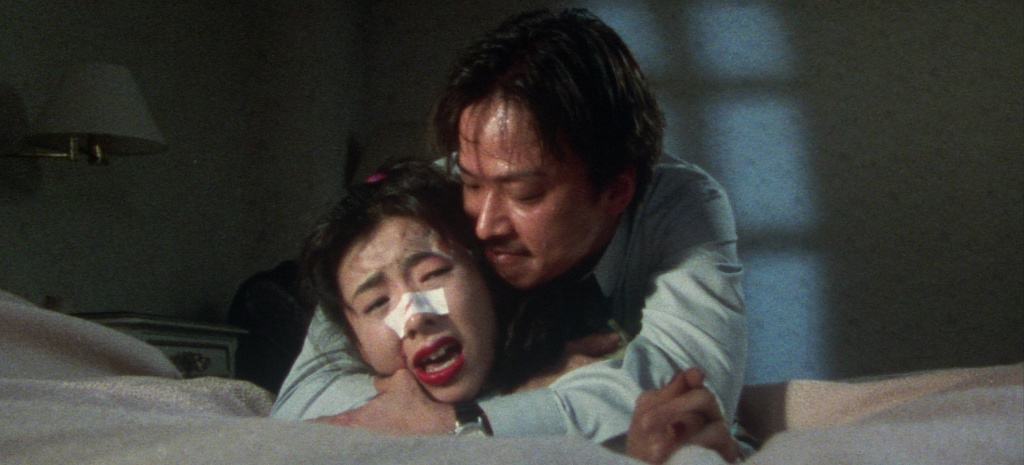
Sometimes what he believes is right is using horrific sexual violence in his interrogation tactics. It’s not pleasant, but it certainly happens.
Long scenes of perversion that make you say, “Oh, could have done without that,” are overshadowed completely by a gritty, grimy, enthralling vision of gangland conflict. Itss atmosphere is ugly, but its approach is beautiful.
Though not as over-the-top crazy as more well-known Miike fare like ICHI THE KILLER or as moody and creepy as AUDITION, SHINJUKU TRIAD SOCIETY carves itself a spot as one of the director’s finest.
Of all the Miike films I watched in close succession of my first time viewing, this was the one that I could not stop thinking about.
The character motivations and internal struggles are just too damn fascinating. And the entire thing is outrageously disgusting, while still being mostly grounded. This creates a viewing experience that just makes me smile in spite of myself.
THE BIRD PEOPLE IN CHINA (1998)
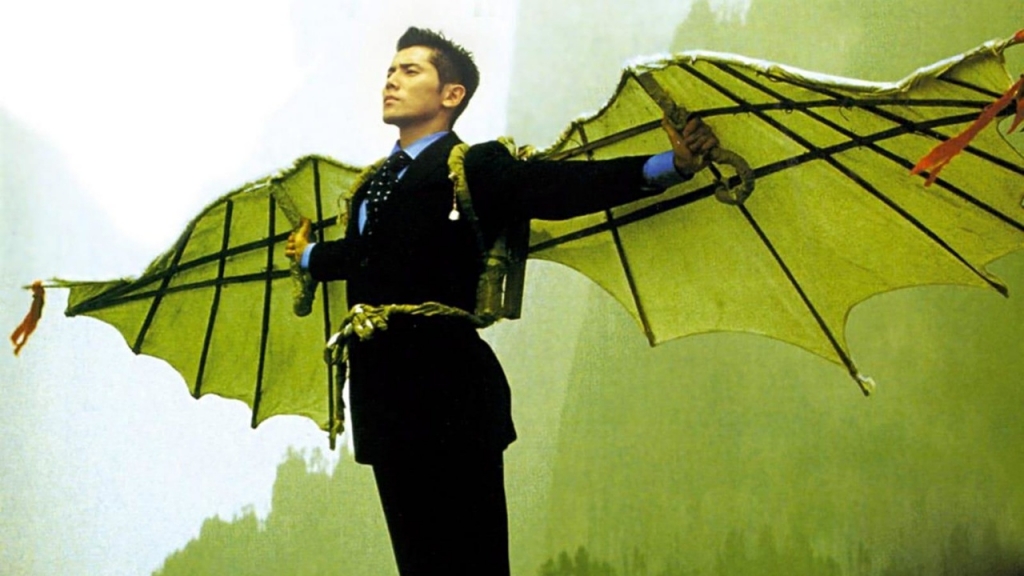
Recommended by Guest Contributor, Kyle Hintz (@bloodhoundpix on Instagram)
The Bird People in China follows a young Japanese businessman, Mr. Wada (Masahiro Motoki), traveling to a remote village in the mountains of China in search of a profitable vein of jade. In China, he meets his guide, Mr. Shen (Mako), and a yakuza named Ujiie (Renji Ishibashi) who is there to collect a debt from Wada’s company. The three make an odd pair on the long, arduous journey to the village. Shen struggles to keep the peace as Ujiie frequently bullies Wada in regards to the debt.
Upon arrival, the three men slowly become taken by the simple way of life in the village and lose track of their initial purpose.
Early on, there is a fast-paced sequence which gives us a glimpse of Wada’s urban life. At this time, the film plays at double speed, creating a visual juxtaposition to that of the slow, contemplative pace of village life. Gradually, the true humanity of the men is revealed as they question whether to allow civilization to invade the village. In this way, Miike explores themes of urban versus rural life and nature versus technology.
Aside from the yakuza character, this setup sounds nothing like what you would expect from a Miike film. And that’s the beauty of it.
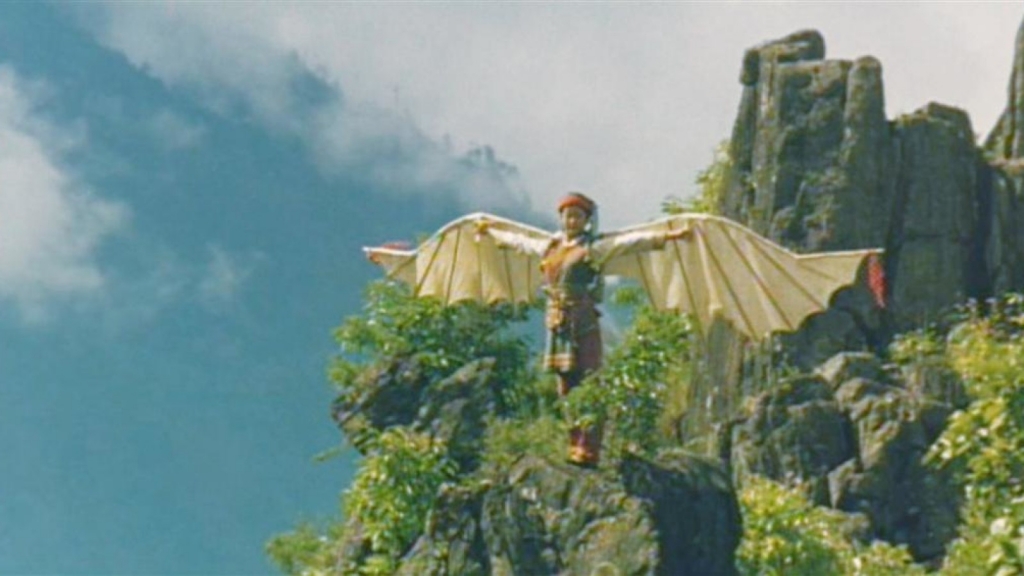
Based on the novel of the same name by Makoto Shiina, and adapted for the screen by Masa Nakamura, Bird People is a huge departure for Miike, showing his tremendous range as a director.
He handles scenes of quiet spiritual revelation and broad comedy as well as any of his extreme action set pieces. It is a moving and funny film — and as humanist as any film ever made — which makes it all the more unique given the source.
I recommend all Miike fans seek it out, if for no other reason than to truly understand how versatile a filmmaker Miike really is.
AUDITION (1999)
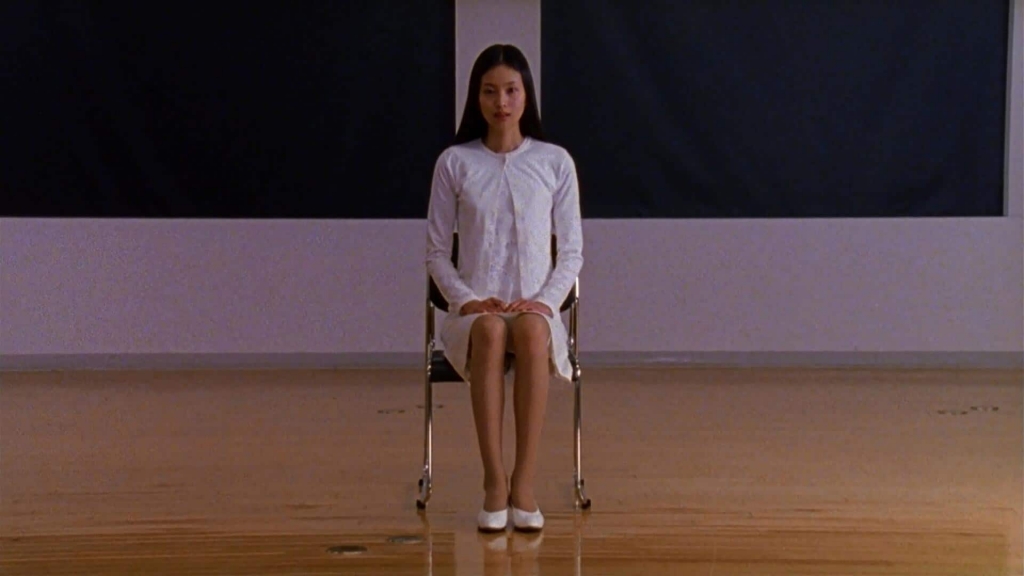
Recommended by Guest Contributor, Charles J. Frigault (Instagram @urbancannibal)
I first saw Takashi Miike’s Audition (1999) on a rainy autumn night at a local independent theater. The millennium had just taken its first steps, gracelessly so, as the world wrestled with the aftermath of the Twin Towers attack. The perceptible vibe around this period of collective trauma was that of unease, as a silent specter of unknown villainy loomed large within those storm clouds that writhed ceaselessly above. Bright wet leaves twisted at our feet as we stood in line to be ushered into the old theater. I wondered if that unrest felt in the streets would dissipate once in our seats. It didn’t. Long before the house lights fell and “Kiri, kiri, kiri, kiri” became synonymous with indulgent sadism, the mood was gloomy and pickled with a disquiet pressure.
Streaming the film the other night was certainly a different experience than it was theatrically in 2001, and this time I wasn’t quite sure who to root for.
Therein, coiled tight like a wrathful serpent, is Miike’s mastery of the craft; he fashions imperfect characters with imperfect motivations and puts them on display for us to weigh, as both aroused audience and cinematic judge and jury.
My digestion of this capable dish was influenced in 2001 by harrowing global events and in 2020, by shades of #MeToo and surging battle cries for equity.
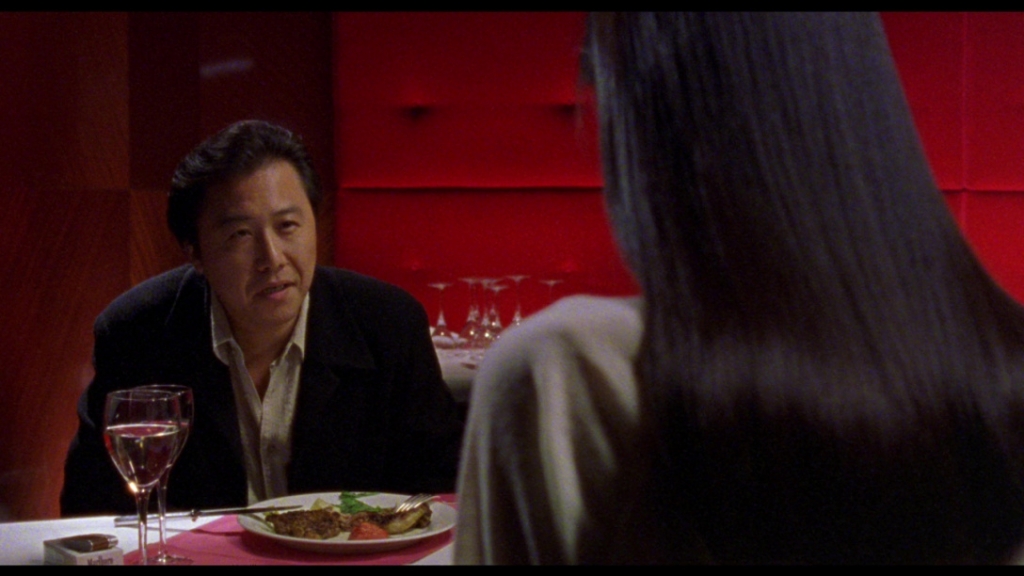
On that chill autumn evening, I didn’t muster a slow clap in Asami’s direction, where I offered uproarious applause to Jennifer in I Spit on Your Grave or more recently Jen from Revenge. All were subjected to unspeakable torture and abuse at the hands of men in their life, where trauma fuels a vicious campaign of vengeance. However, Asami’s is not met with the same smirking satisfaction, which leads me to ask: Why not? Even now, bringing that equitable lens to offer focus?
Empathy for Asami should have been elicited in spades like extra found body parts by the titular and the predatory audition sequence itself.
The scene is played for laughs, and Miike frames the activity in savory satire, with quick cuts and side glances between the two male leads as we get a brief glimpse at Aoyama’s unwitting suitors vying (unwittingly, as part of a thinly veiled con job) to replace his deceased wife. That is, until we meet candidate #21 who proclaims that she’s had pornography experience and sheds her clothing. At this moment, the tragic casting couch angle we are all too familiar with truly in falls into view.
Yasuhisa (Aoyama’s associate) leans over to his assistant and requests that she be utilized for “another job.” Not unlike that first viewing in the cinema, none of us laughed here either. The scene is bright and competent, yet clouded this time with that dark vision of our current realities lurking in the sky and the knowledge that what is playing out in the film is also in our courts (legal, not basketball), streets, and schools — truly no laughing matter.
Asami’s arc and Aoyama’s punishment culminate in the infamous torture scene that ends the film.
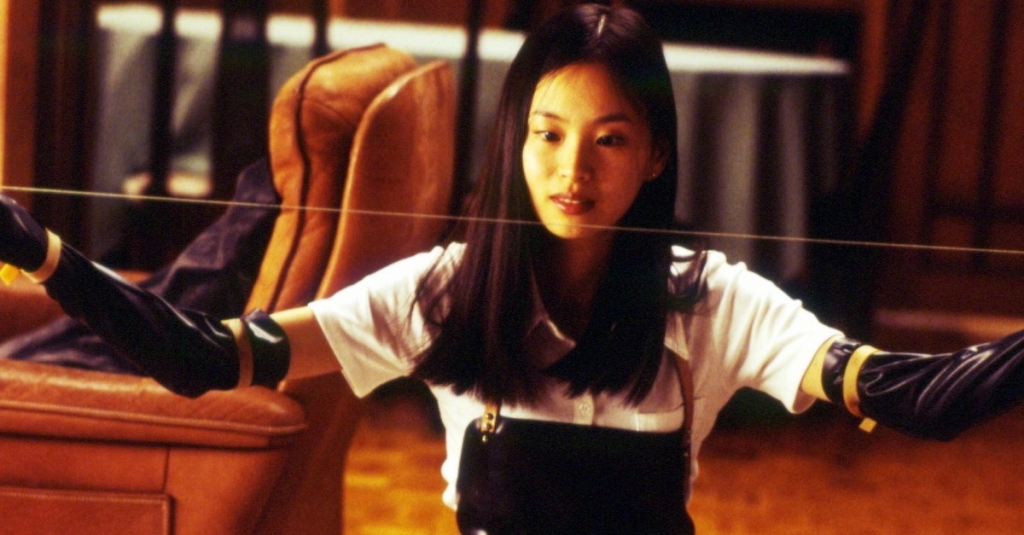
By today’s standards, I found it a remarkably tame climax. I actually believe the drug induced hallucination/dream sequence to be a much more masterful presentation and is the best example of Miike’s work here.
I’m still not sure what that says about me or the horror genre at large, because both at that first screening and upon revisiting now, it was visceral and intense. Miike shows remarkable restraint in the scene; sure, his gleeful sense of black humor splashes about, as a severed tongue slaps lazily at a bloody floor. However, it’s hard to find any of it particularly funny, even when Aoyama’s severed foot is tossed at the window with a sloppy red thud.
I think this is because, deep down, we know the truth. Our own personal truth. That no matter how mild or extreme, psychological pain is real. It should and can be trusted. Each of us pushes the boundaries of what we can tolerate in the name of “growth” or “moving on” to deal with it effectively. For some, methodically picking scabs is far more satisfying than treatment. In Asami’s case, this is an act best performed with heavy sedatives, hallucinogens, and a piano wire.
THE HAPPINESS OF THE KATAKURIS (2001)
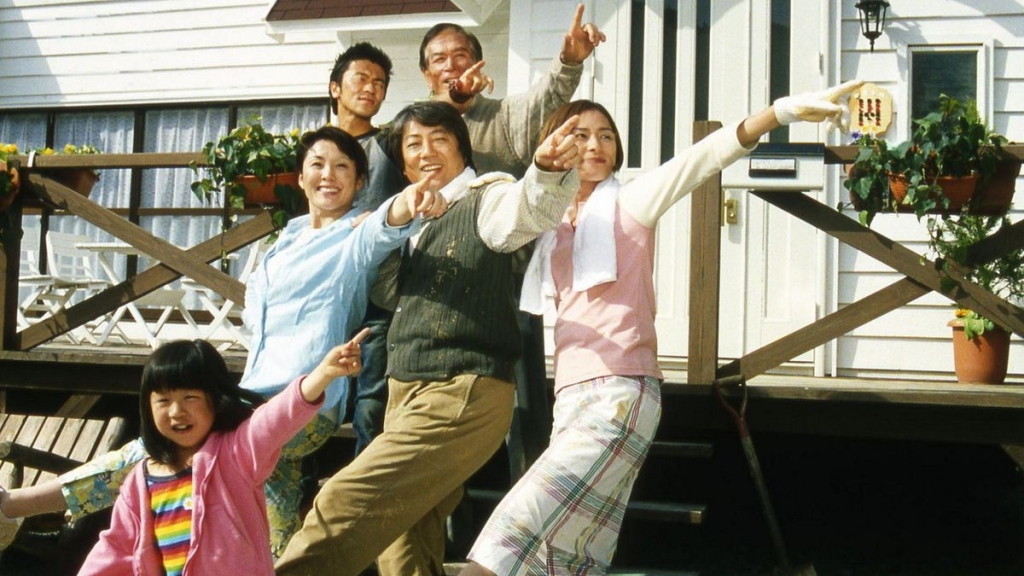
Recommended by Alli Hartley
Those who know Takashi Miike from extreme horror films such as Audition or Ichi the Killer would be confused, to say the least by his 2001 musical farce The Happiness of the Katakuris. Known for his violent and controversial offers, Miike’s gentler fare is often overlooked. But that doesn’t mean that this film is entirely devoid of horror, especially as corpses begin to pile up.
The Happiness of the Katakuris centers on a down-on-their-luck family that purchases a small house near Mount Fuji, intending to turn it into a successful bed-and-breakfast. When the planned road extension doesn’t come to fruition, the Katakuris’ hopes and income are at its nadir until one morose-looking fellow finally appears on their doorstep.
The Katakuris are elated, until their first guest is found dead of suicide in his room. Worried for their hotel’s reputation, the family decides to bury the body. What they had hoped was a one-time incident quickly becomes commonplace, as guests keep dying (through no fault of the Katakuris), and the Katakuris continue to helplessly dispose of their guests.
When the divorced and lovelorn daughter Shizue (Naomi Nishida) falls in love at first sight with a mysterious US Naval Officer (Kiyoshiro Imawano), the Katakuris struggle to avoid discovery while maintaining their optimism.
Will the Katakuris be exposed? Will their bed-and-breakfast finally be successful? Or is the ending far more explosive than anyone could have guessed?
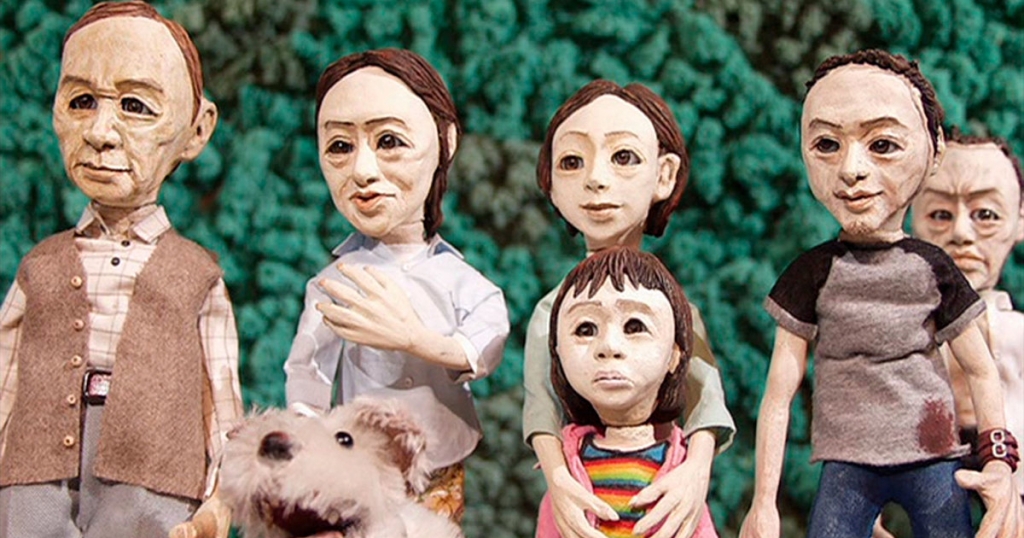
Punctuated at every turn with musical numbers, claymation, and even a karaoke sing-along segment, it is frankly criminal that this pastel-colored confection isn’t the cult midnight movie it deserves to be.
Miike finds a way to blend fantasy and nihilism in a way that has only increased in relevance. If you want to find a movie that is both bleak and surreal, yet fun and joyful — in short, if you want a movie truly made for 2020 — you couldn’t do better than The Happiness of the Katakuris.
ICHI THE KILLER (2001)
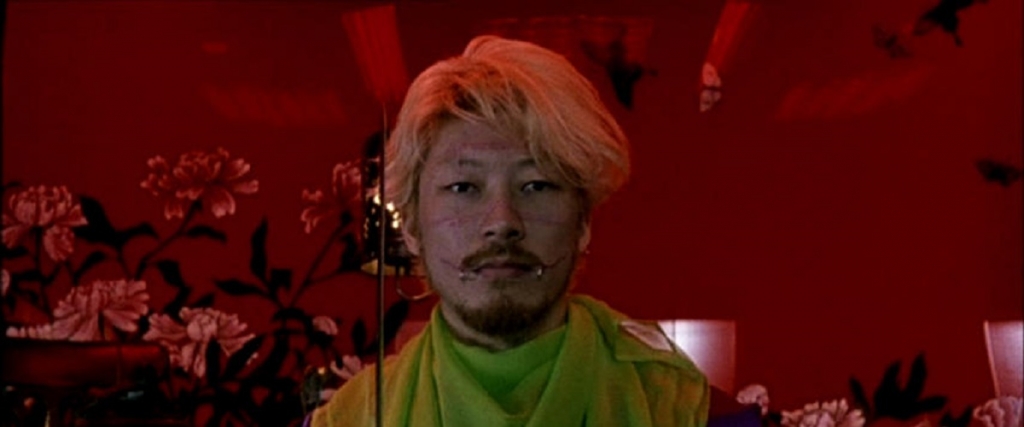
Recommended by Megan Hopkin
A darkly comical caricature of video violence, or a film experience made to be as painful to watch as the torture endured by the players? Ichi the Killer proves to be as divisive as the pierced tongue in Kakihara’s maw…in other words, very.
The plot is simple.
A darkly disturbed man named Ichi (played by Nao Omori) is psychologically berated and eventually manipulated into becoming an unstoppable killing machine tasked to eliminate members of the yakuza. There’s only so long you can get away with this enterprise before you piss someone off. Enter the sadomasochistic blondie Kakihara (Tadanobu Asano), who is eager to meet the man behind the brutal off-screen slaying of his boss.
Drenched in colorful backdrops, and pounding music, the world of Ichi the Killer feels like a video game — with enough violence to make even the hardiest gore lover flinch.

Indeed, the film’s stylish execution of, well, executions, juxtaposes just how dark this movie really is. Miike very successfully captures popular perceptions of the yakuza — from the glamour and the excess, to the terrifying brutality.
Body parts fall off of characters left, right, and center. Skin is torn off like candy wrappers at any given opportunity. Characters are used as meaty punchbags. And it’s all for your entertainment.
Which is the scary part.
Takashi Miike’s masterpiece is exactly what you make of it. The brutality is excessive — on purpose. The very consumption of what you’re consuming is the issue. And it’s up to you to make a moral judgement upon whether that’s right or wrong.
Ichi the Killer won’t hold your hand and walk you through what’s wrong with it. Instead, it’ll suspend you from the ceiling and cause you as much discomfort as possible to get an admission. A love letter to, or damnation of, societal hedonism? It’s all up to you. And I love Miike for it.
VISITOR Q (2001)
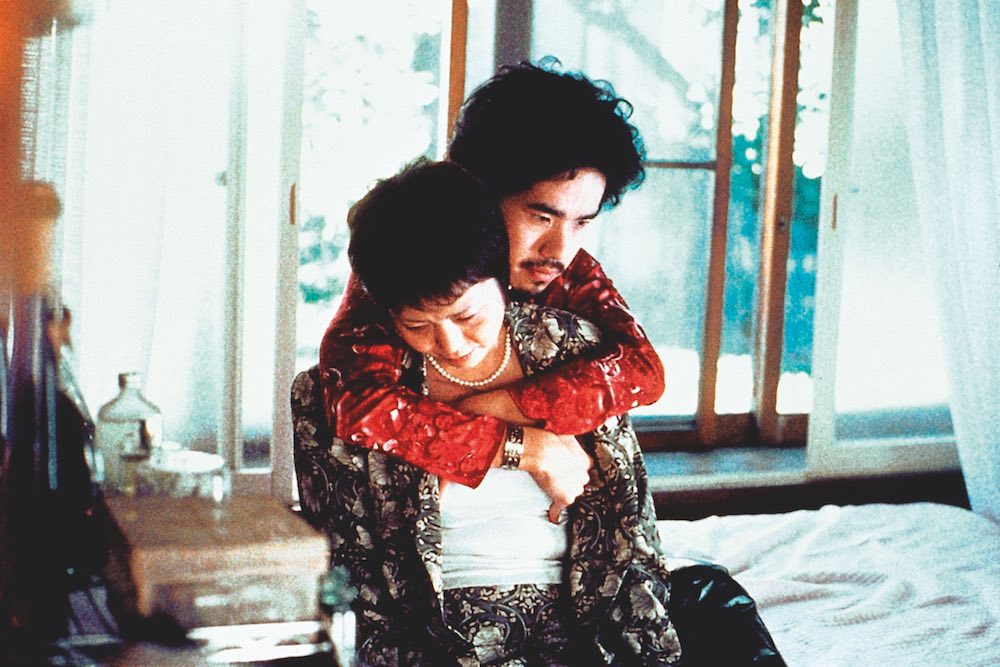
Recommended by Guest Contributor, Craig Draheim
2001 turned Takashi Miike into a prolific legend, as he released six movies (four of which would become iconic staples within his career) that year. While little is discussed on Family 1 & 2, we were blessed with Ichi the Killer, Agitator, The Happiness of the Katakuris, and often heralded as his most “messed up” movie, Visitor Q.
Compared to Pasolini’s Teorema, Miike cranks the premise to 11, presenting a dysfunctional family of four to the extreme. The son beats his mother, the daughter prostitutes herself (even to her father), and the dad has voyeuristic and violent sexual desires. However, when a stranger enters their lives, a series of twisted incidents brings this family together in their own disturbing way.
The final part of Love Cinema, a series of Japanese films by CineRocket designed to showcase the benefits of digital video filmmaking, Visitor Q has been a fascination of mine for over a decade. Half was spent searching for it, and the other half was spent subconsciously finding any way I could to bring it up in film discussion.
Unfortunately, all potential discussions of the film are quickly shot down due to Q’s extremely controversial content. While it doesn’t have the level of torture or physical violence associated with many of his other notable works, its sexual content (incest, necrophilia, and sexual assault), nihilism, and documentary style of filmmaking makes it a difficult watch — even for hardened Miike fans.
Once we as viewers get past these elements — which can be hard to stomach especially for westerners — we find Q is arguably Miike’s most intimate work.

Understanding these extreme story elements as metaphor, we are given a lot to chew on as a critical-thinking audience. Ultimately, Visitor Q delivers a pitch-black satirical commentary on the family dynamic of the 2000s.
So why are audiences more willing to watch one of Miike’s films with excessive physical violence than this film that reflects incestuous relations and cruelty within a family portrait? I can only hazard a guess that maybe it is because Miike doesn’t allow for an easy escape with Q. Opting out of the hyper-exaggerated world he’s so well known for, his documentary-stylized realism and use of low budget digital video tricks our brains into believing we are watching some 21st century snuff film rather than a narrative story.
There’s a reason why Cannibal Holocaust or even The Texas Chainsaw Massacre caused the stir that they did. Like those films, Miike masterfully makes you forget what you are watching is just a fictional narrative. And in a way few other filmmakers have achieved, Miike takes us to a place of transcendence through extremity, without ever crossing the line into pretentious or gratuitous.
Technically, Visitor Q is the product of its time, but it’s a film I’ve never been able to get out of my head. And for my decade long fascination with it, I’ve yet to find anyone willing to properly discuss and dissect it with me. Maybe I’ll finally find someone who appreciates it as much as I do among the Morbidly Beautiful readers.
GOZU (2003)
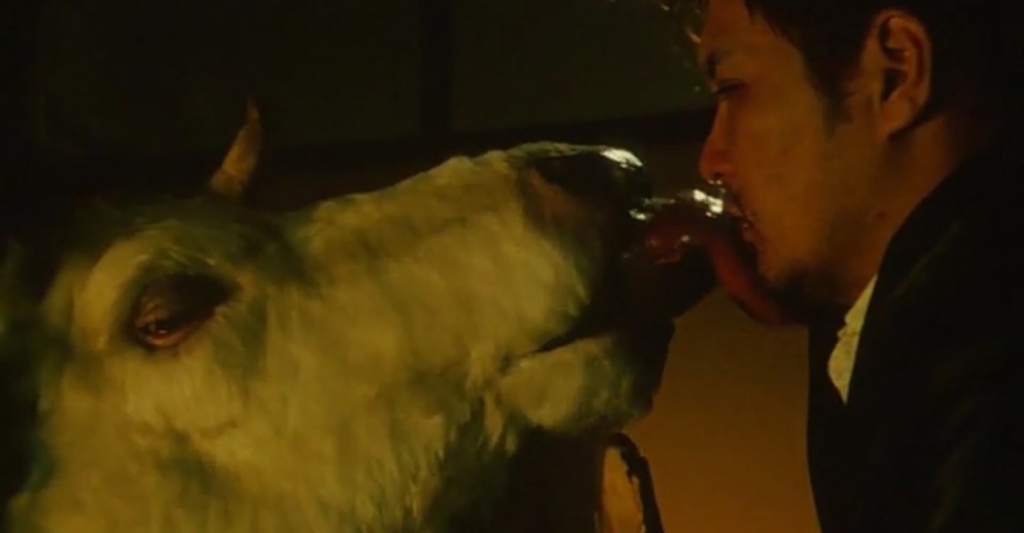
Recommended by Danni Winn
Takashi Miike has mentioned in the past that some of his favorite filmmakers are Paul Verhoeven, Akira Kurosawa, David Cronenberg, and David Lynch. With his film, Gozu, you can clearly connect the dots to these influences. The prolific Japanese filmmaker has produced a plethora of work that proudly lands all over the map, but Gozu is the perfect example of one that is happily situated on the outskirts of said map.
A far cry from the epic battle immortalized in 13 Assassins — and coming nowhere near the level of vicious, Manga-influenced bloodshed as in Ichi the Killer — Gozu instead confidently goes its own direction.
After yakuza member, Ozaki, begins a shocking mental decline that endangers the Azamawari clan, his brother and fellow gang member, Minami, is tasked with killing him. But on the way to reluctantly carry out his orders, Minami “loses” his unstable brother within a shady town of eccentric characters reminiscent of those found in the quaint, Northwestern community of Twin Peaks.
As GOZU progresses, so does its surreal (and sometimes incoherent) narrative that intertwines baffling exchanges and unnerving, unforgettable images.
I guarantee you will remember at least one scene from this flick.
A wild mixture of yakuza intrigue, dark humor and arthouse ambience, Gozu is a strangely satisfying Miike entry. If you have yet to experience this underrated gem, I’m going to avoid saying much more. Because I firmly believe the less you know about this one, the more fun you will have with it.
IZO (2004)
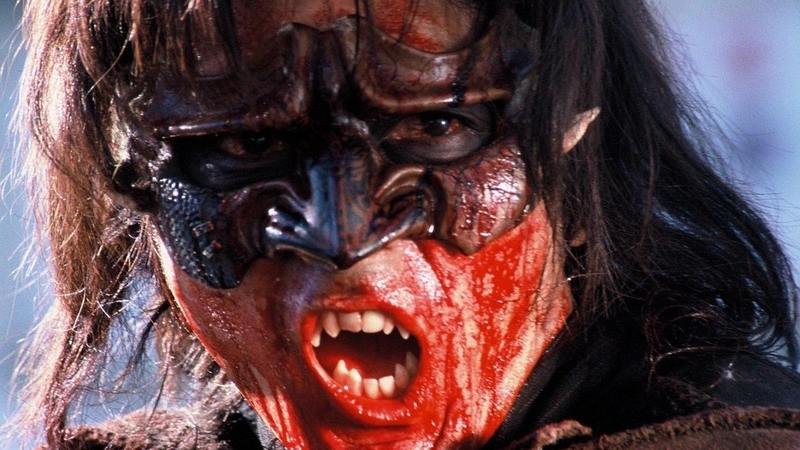
Recommended by Jamie Marino
This one is off the rails. No, this one is a train shooting straight up into the sky.
One of the complaints some have made against Miike’s films is how difficult they can be to follow. He is definitely a practitioner of the non-linear narrative. That trait, and a main character who is a 2 hour blur of unending slaughter and screaming, have made Izo a polarizing film.
The spirit of an ancient samurai assassin, Izo haunts our dimension in search of vengeance and existential understanding. It is impressively philosophical and intelligent, while at the same time delivering a constant shower of gore. Personally I enjoyed the combination. Philosophy and cinematic violence are two of my favorite things.
As far as style goes, this isn’t much of a departure from the type of films Miike is famous for. That may disappoint some fans who hungrily eat up his innovation, irreverence, and envelope-pushing. But if you want a crash course in how maniacal and fast-paced his action is, this is the one for you. Some might say the Miike cherry should be broken with Audition, but I disagree. Although Audition is very much in line with his other work, the story doesn’t unfold like classic Miike. So, while it’s certainly one of his most well-known works (especially among horror fans), I believe it’s misleading to introduce Miike with Audition.
ZEBRAMAN (2004)
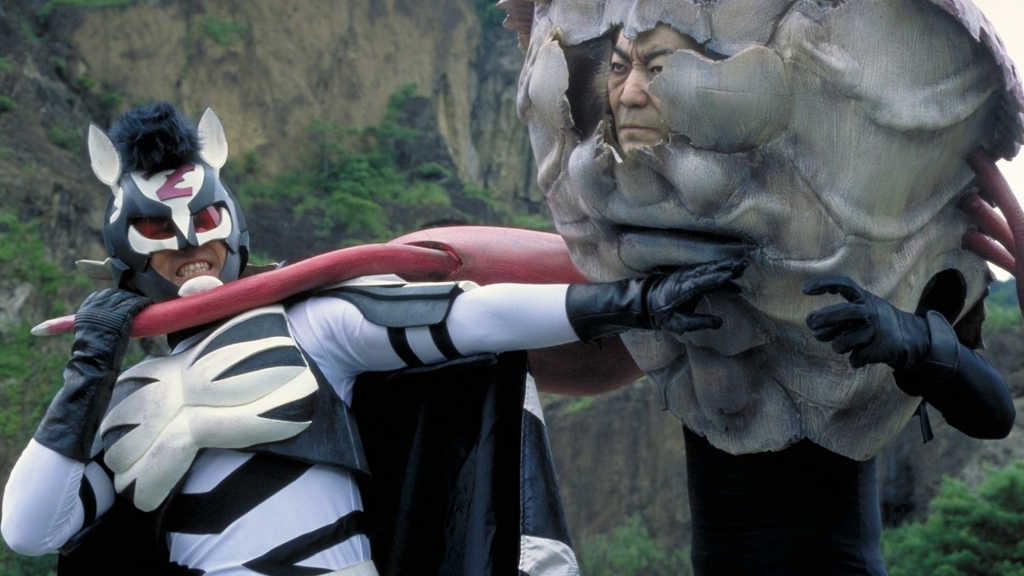
Recommended by Jamie Marino
Shinichi Ichikawa (Miike regular Show Aikawa) is a mocked and disrespected 3rd grade teacher. His home life isn’t much better, since his wife cheats on him, his teen daughter dates older men, and his son is bullied in school for having a father who is a teacher.
As an escape from his disappointing life, Shinichi dresses up as his favorite superhero, Zebraman, the main character from an obscure 1970s television show. What begins as cathartic bedroom roughhousing soon becomes very serious as crime increases in his city and he decides to fight it. To complicate his new job, there are also monsters run amok and a green alien sludge bent on taking over. His limited mortal abilities then give way to actual superpowers.
Go with it. His maniacal and rhythmic direction helps tell this fractured superhero story beautifully. It’s full of hilarious CGI, violent serial killer/monster showdowns, and even some bittersweet emotions. The Miike-directed Zebraman 2: Attack on Zebra City is also recommended.
THE GREAT YOKAI WAR (2005)
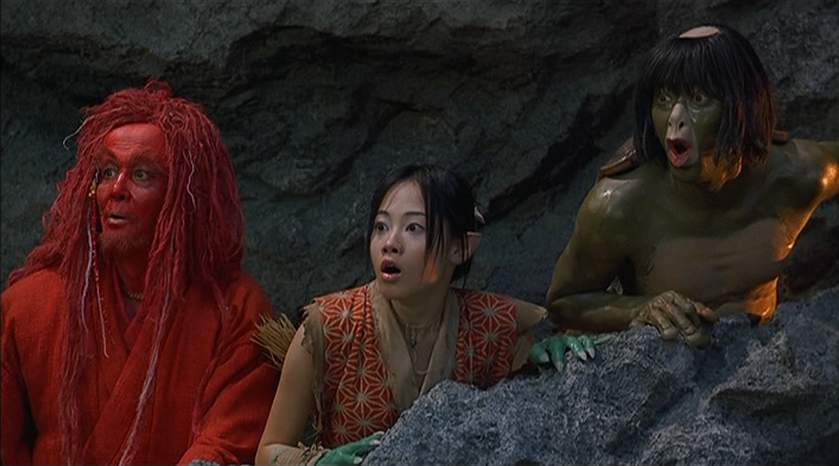
Recommended by Jamie Marino
This is the one. My favorite Takashi Miike movie.
This is his epic fantasy retelling of the Japanese myth “Momotaro”. It features hundreds of goblins, demons, and monsters of every kind and variety (called “Yokai”) waging an all-out war for ownership of the land known as Kikaijima.
A remake of 1968’s Yokai Monsters: Spook Warfare, Miike’s version is far less political and has been interpreted as being an allegory for the conflict between ancient and modern Japan. I am reminded of Miyazaki’s Princess Mononoke. The Great Yokai War is an all-you-can-eat chocolate sundae for the eyes, and it also gives us a wonderful insight into the myths the Japanese have passed down through many generations.
It features many familiar fantasy tropes (a “chosen one”, a quest, a broken magic sword, challenges to prove worth). Luscious and oozing with opulent designs, and roaring with a Lord of the Rings + anime + Time Bandits equation, The Great Yokai War is a side of Takashi Miike (the Steven Spielberg side) that we rarely get to see.
MASTERS OF HORROR: IMPRINT (2006)
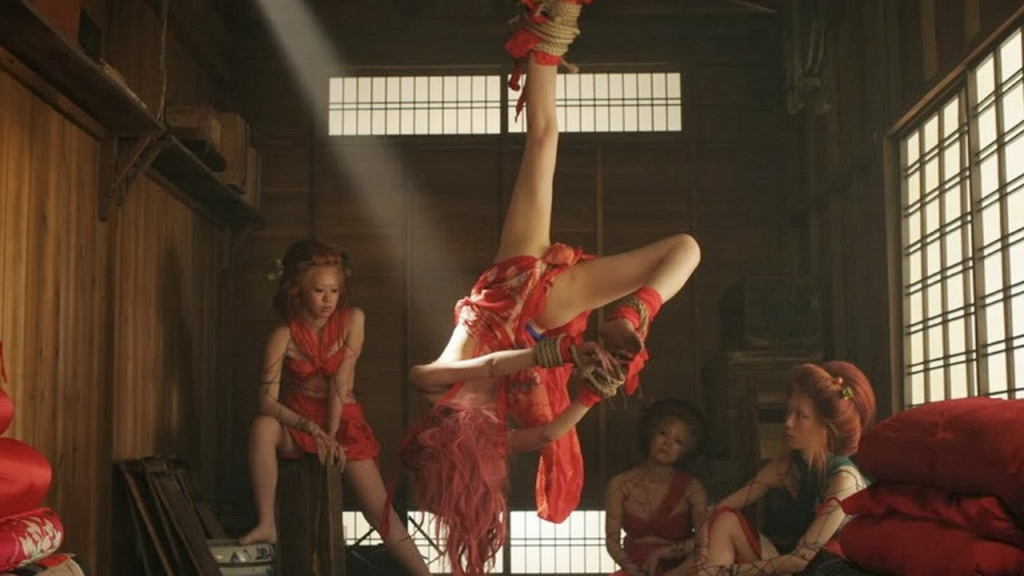
Recommended by Alli Hartley
In January of 2006, Takashi Miike’s entry in the “Masters of Horror’ series was slated to premiere on Showtime. A week before the premiere date, all references to the episode were scrubbed from the Showtime website, and the episode, Imprint, was removed entirely from the roster. Though much had been made of each director in the Masters of Horror series being given free rein, with allowances made for more gore and sexuality than had previously been allowed on television, Miike’s Imprint proved to be too hot for Showtime to handle.
After watching the entry, I can see why.
Imprint is without a doubt one of the toughest things I’ve ever had to watch. In addition to traditional gore and nudity, Imprint includes mouth and fingernail torture, dozens of dead fetuses, pedophilia, rape, and unwitting cannibalism. That being said, Imprint is far more than exploitative.
If you can stomach the journey, this short film has a lot to say about the storytelling, perspective, and the very nature of personal hell.
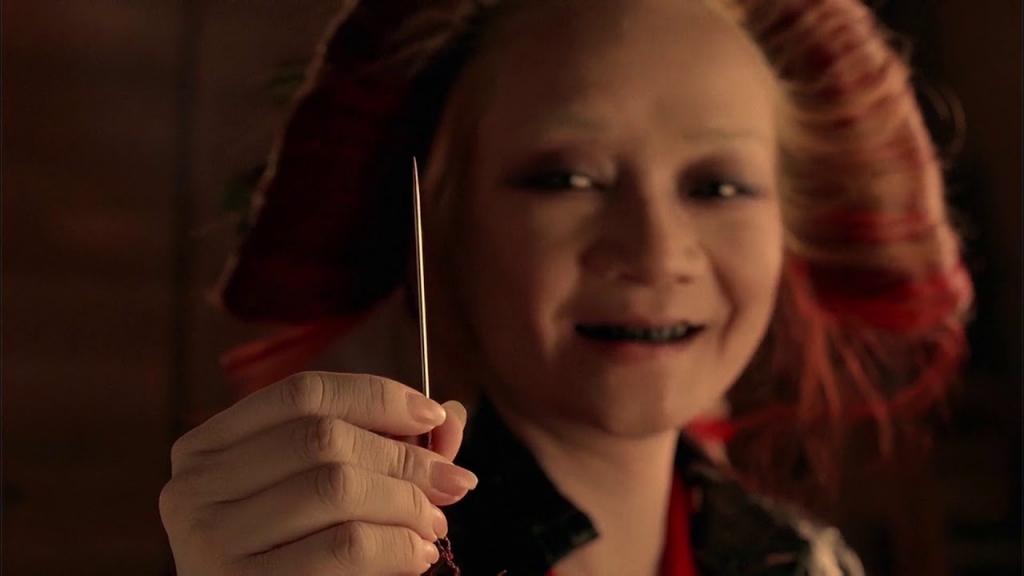
Christopher (Billy Drago), a 19th century journalist, travels by boat to a mysterious island, populated entirely by prostitutes and their keepers. Christopher is seeking Komomo, a lost love that he promised to bring home to America. With nowhere to stay for the night, Christopher is pressured to accept a room and chooses the company of a disfigured prostitute (Youki Koudoh) who had been hiding away in the shadows.
She tells him that Komomo had lived on the island, but she has since died, tiring of waiting for Christopher to find her. Distraught, Christopher asks the woman to tell him her life story. As she begins to talk, the truth about herself and what happened to Komomo continues to shift, finally revealing a horrifying tale that pushes Christopher to his breaking point.
But Imprint goes much further than the lover-as-savior narrative found in classics such as Vertigo and The Vanishing.
Christopher himself is proven as unreliable as his companion, and the themes of secret violence and incestuous abuse bleed into both stories. The use of color (particularly when contrasted against scenes set elsewhere) paints the island itself to be demonic and otherworldly, but it is a sad aside that the woman finds this a paradise compared to what her parents suffered.
Anyone who has told a story knows how to suit their tale to their audience. In Imprint, the tale told and retold circles ever closer to Christopher’s own personal history. While some have accused Imprint of being misogynistic and exploitative, there is no more perfect place to depict torture than a mysterious island where lost souls meet their fate. On this island, evil natures manifest in physical ways and the dead can be tortured for a long time before they realize they are in a Hell tailored just for them.
13 ASSASSINS (2010)
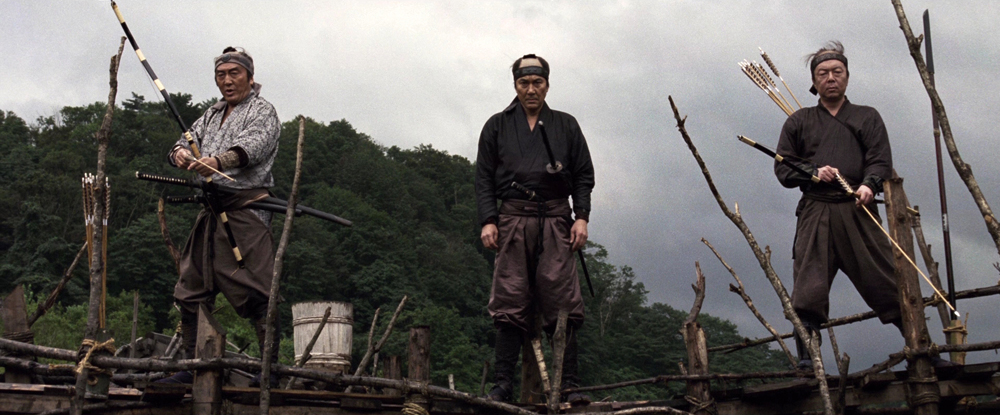
Recommended by Danni Winn
There are few creators in the world who can boast as many directing credits in film, television, stage and beyond as Takashi Miike. But what adds depth, character and an uncommon allure to his filmography is the astonishing spectrum of works he has produced over the years. While he may be best known for his truly visceral horror offerings, he also brought a modern honor to an ages old tale, tactfully taking on a remake of Eiichi Kudo’s 1963 samurai saga, The 13 Assassins.
After earning the badge of a cinematic provocateur, Miike — perhaps strategically — set his sights on this epic piece of Japanese film history to flex some his directing muscles rarely seen. Stepping into sacred and uncharted territory for himself, he boldly delivers some of his best directorial work in 13 Assassins.
I will admit, I am a bit of a geek when it comes to period battle pieces. I downright dig the bravery, discipline and tradition demanded of warriors. And obviously I have a serious soft-spot for Master Miike. So when 13 Assassins was released, I swooned.
Loosely based on the turmoil of the late 1800s in feudal era Japan, 13 Assassins yields a thorough, thoughtful depiction of honor, respect and epic swordplay.
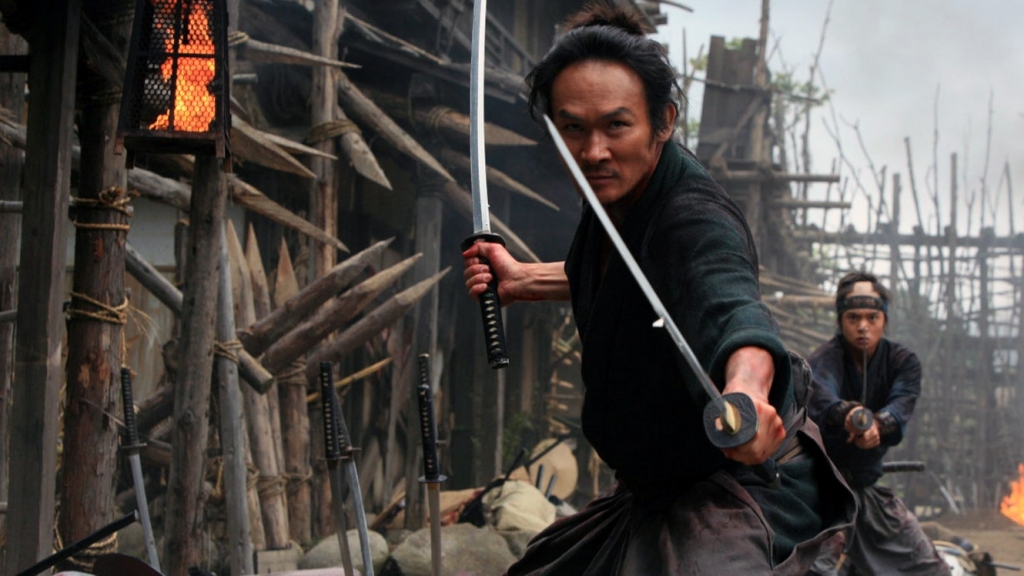
It centers around a band of untested but likable samurai standing up against the savage and sadistic Lord Matsudaira Naritsugu of Akashi (impeccably portrayed by Goro Inagaki) and his mass of loyal, armed retainers. Incredible attention to historical detail, coupled with meticulous character development and unbelievable action sequences, cement the audience’s investment in 13 Assassins.
But it’s the last third of the film where Miike’s direction shines. A monumental battle takes place in a boobytrapped village between the horde of guards and the incredibly outnumbered samurai that is so adrenaline fueled, I felt exhausted after experiencing the forty minute skirmish.
13 Assassins lifted Takashi Miike into another stratosphere; it is simply one of the best fucking samurai movies of all-time.
AS THE GODS WILL (2014)
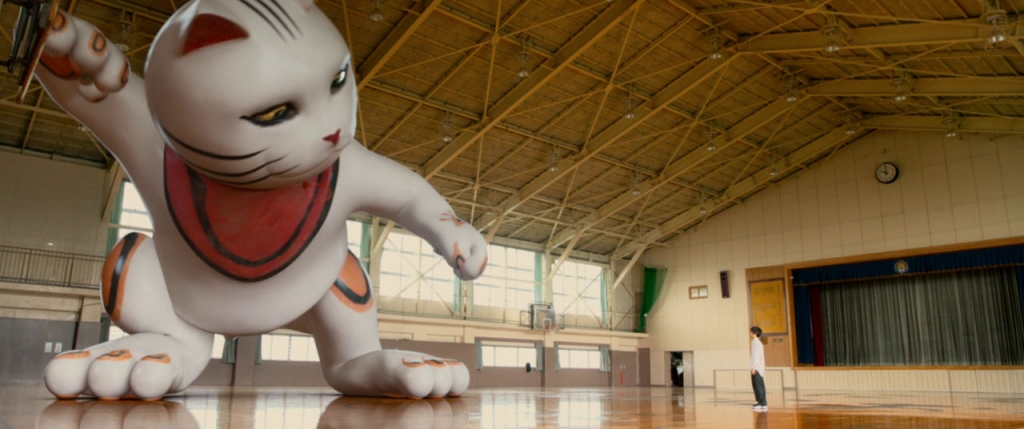
Recommended by Guest Contributor, Joe Leal (@filmnerd_27 on Instagram)
Trying to critique a Takashi Miike film can be difficult. There are things occurring that the viewers do not understand, and quite honestly may never be able to comprehend.
For those of you who are unaware of Miike, he is a talented Japanese filmmaker who has directed over one hundred films from every genre, with a dedication to detail that is unmatched. Miike is most known for extremes — usually in the form of sexually taboo and violent imagery. These taboo ideologies mixed with gory extremes can makes his films difficult to watch at time. However, added with his incredible story telling, and his detailed eye for landscapes, costumes, and scenery, a Miike film is nearly impossible to peel your eyes away from.
Miike’s skill as a director allows him to deftly intersect and balance a multitude of genres within one film. As a result, As the Gods Will is classified as a supernatural horror film inspired by the Manga “Kamisama No Iu Toori”. However, it’s also mixed with comedy and suspense, with emotional drama pervasive throughout.
The film begins at a high school where the students in this specific classroom are forced to play a horrific game of red light, green light commanded by a Daruma Doll. The thought of this seems ludicrous. But this scene sets the tone for the rest of the film. This visually disturbing, yet beautifully shot film should not work. However, with Takashi Miike behind the camera, he has once again showed that he could film an ice cube melting and still turn it into a quality film.
While this may not be his greatest film, I will say it is in the upper echelon of his extensive filmography.
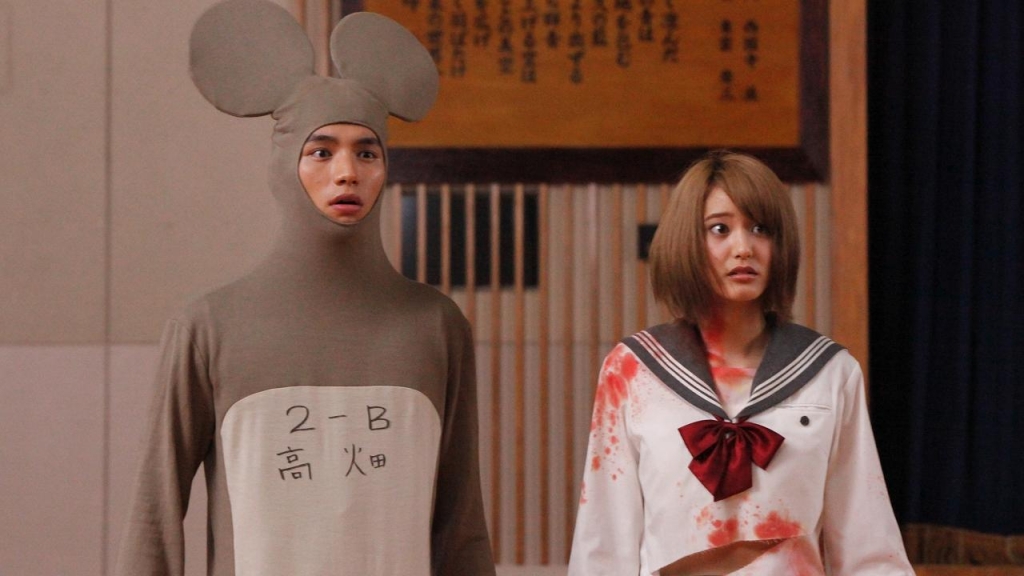
Watching this outrageous story unfold with no prior knowledge made my viewing much more enjoyable. It is why I do not want to give away too much of the plot and possibly ruin the experience for others who haven’t seen it. But all you really need to know is that it is a bit like Battle Royale mixed with Saw, then blended with Maze Runner and (remarkably) topped off with a dash of The Breakfast Club.
Even that does not truly begin to do justice to explaining this film.
The acting was top notch, and the story came off as believable — which I realize may seem impossible from reading the synopsis. I felt the two leads were incredible playing the parts of Takeru and Shun, but it was Takeru who stole the show with every scene he was in. The effects were impressive as well. CGI was used to showcase the gods, which could only work for this film. And Miike’s signature practical effects were also on point.
As a result, we are introduced to some very unique, but simple looking gods, which, when combined with he insanely violent and gory imagery, makes for a truly one-of-a-kind film. To deny yourself a film by Takashi Miike is like challenging the gods themselves.
BLADE OF THE IMMORTAL (2017)
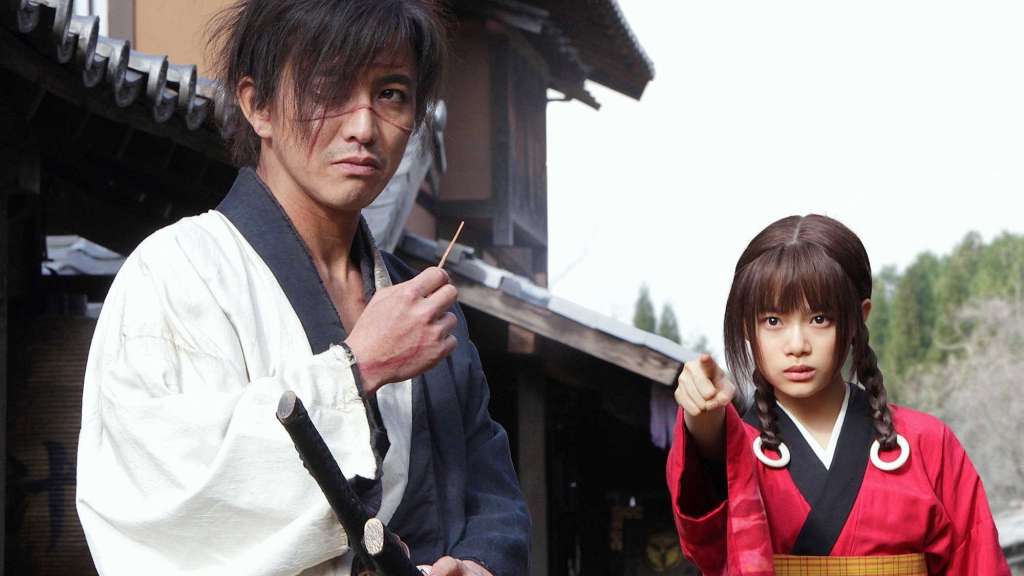
Recommended by Guest Contributor, Curtis M. Parvin (@dollarstorefilm on Instagram)
Upon first glance, Takashi Miike’s Blade of the Immortal (2017) appears to be a samurai film similar to the Lone Wolf and Cub (1972-1974) movies. Both are revenge tales based on manga and contain a powerful male lead wanderer who protects a young child from harm. Upon closer look though, a viewer can see Blade of the Immortal’s horror elements set it apart from other run-of-the-mill samurai cinema.
Our lead, a samurai named Manji (Takuya Kimura), along with his sister Machi (Hana Sugisaki), go on the run after he kills a superior. A gang of ronin bounty hunters then murders Machi in front of her brother. Infuriated, Manji takes on the entire clan in an epic fight sequence reminiscent of the Bride’s battle with the Crazy 88 in Quentin Tarantino’s Kill Bill: Volume: 1 (2003).
Death seems imminent for Manji until a river witch with a white cloak curses him with ‘bloodworms’, leaving him unable to die.
The rest of the plot happens over 50 years later when our immortal hero becomes a hired bodyguard to a young girl, Rin (Hana Sugisaki), whose parents were murdered by the Ittō-ryū, a clan of assassins. Rin hopes to find peace by waging a personal war against these men who robbed her of her childhood.
While the film is a revenge hack-and-slash movie with incredible fight choreography, the ghosts of the past seem to cut deeper.
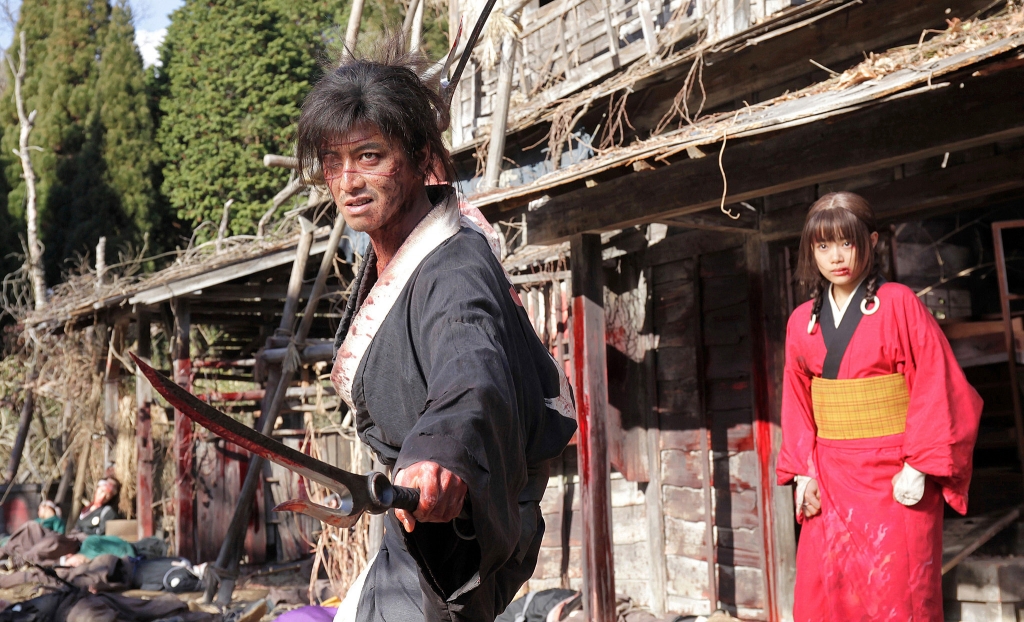
The first assassin who attempts to kill Rin is literally wearing Rin’s mother’s severed head on his shoulder, wrapped in a white cloth. As he pulls back the fabric to taunt her, the mother’s eyes move as if the head were possessed by some evil spirit. After Manji dispatches this assassin, he and Rin form a bond. Both know what it is like to be haunted.
Later Manji meets an Ittō-ryū clan member who has the same bloodworm curse. They engage in a fight under the full moon, bringing to mind horror creatures of classic literature, such as Dracula. Manji and his opponent are both undead. Their bloodstained bodies bare teeth as they turn each other into pincushions with their cutlery and desperate strokes. He says to Manji, “Death is merciless. But not dying is far worse.”
Much like a vampire, the curse of immortality weighs heavily on the damned. They are forced to witness the death of all their loved ones, not to mention the horrible evil humans inflict upon each other year after year.
Blade of the Immortal is a fantastic achievement in the career of Takashi Miike. His 100th film balances many different elements. Would most fans categorize the film as a horror movie? Probably not. But viewers can not deny its horror/supernatural elements which elevate the action and themes. I appreciate what Miike is trying to say with this film: everyone has their own demons, and the demons don’t rest until they are confronted.


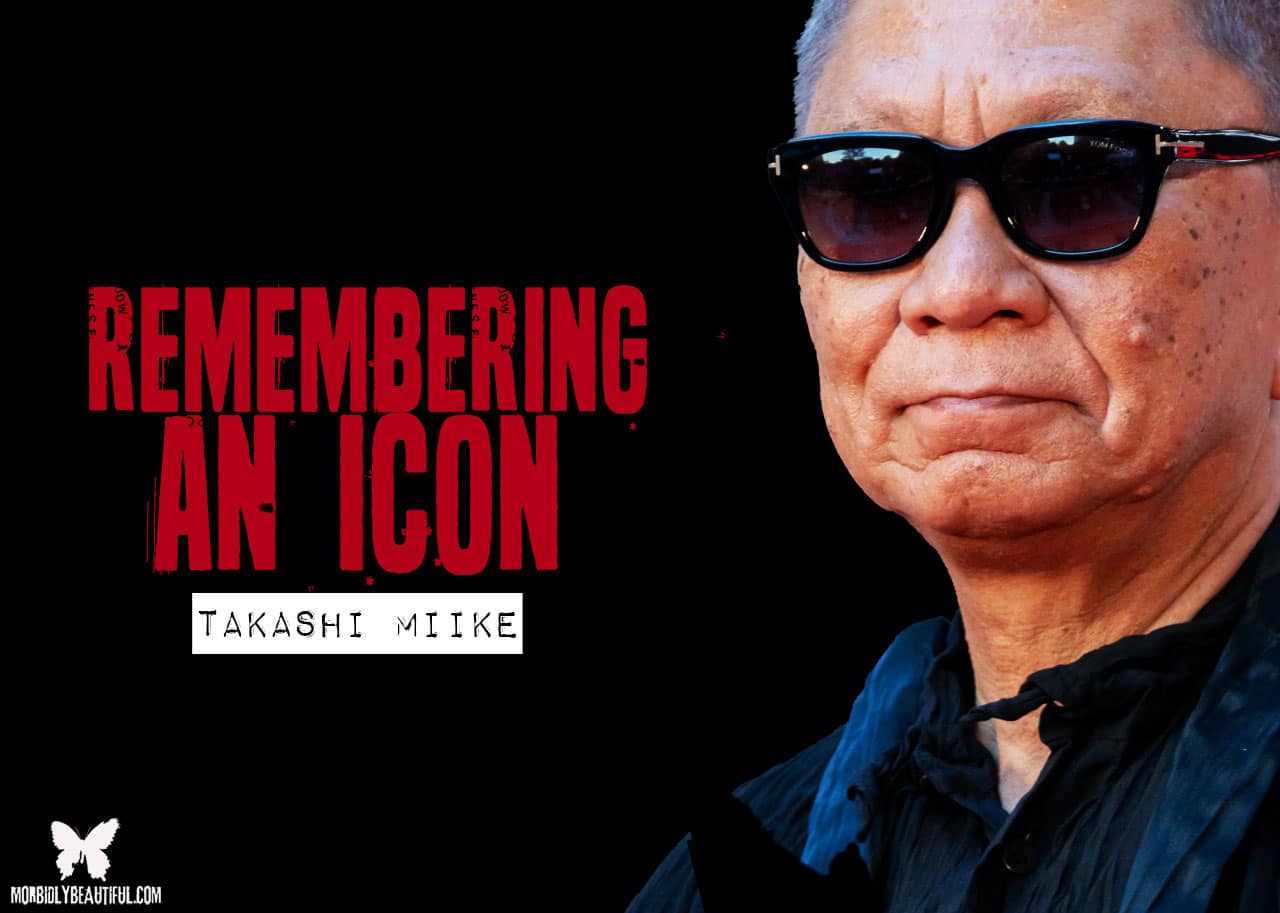












Follow Us!